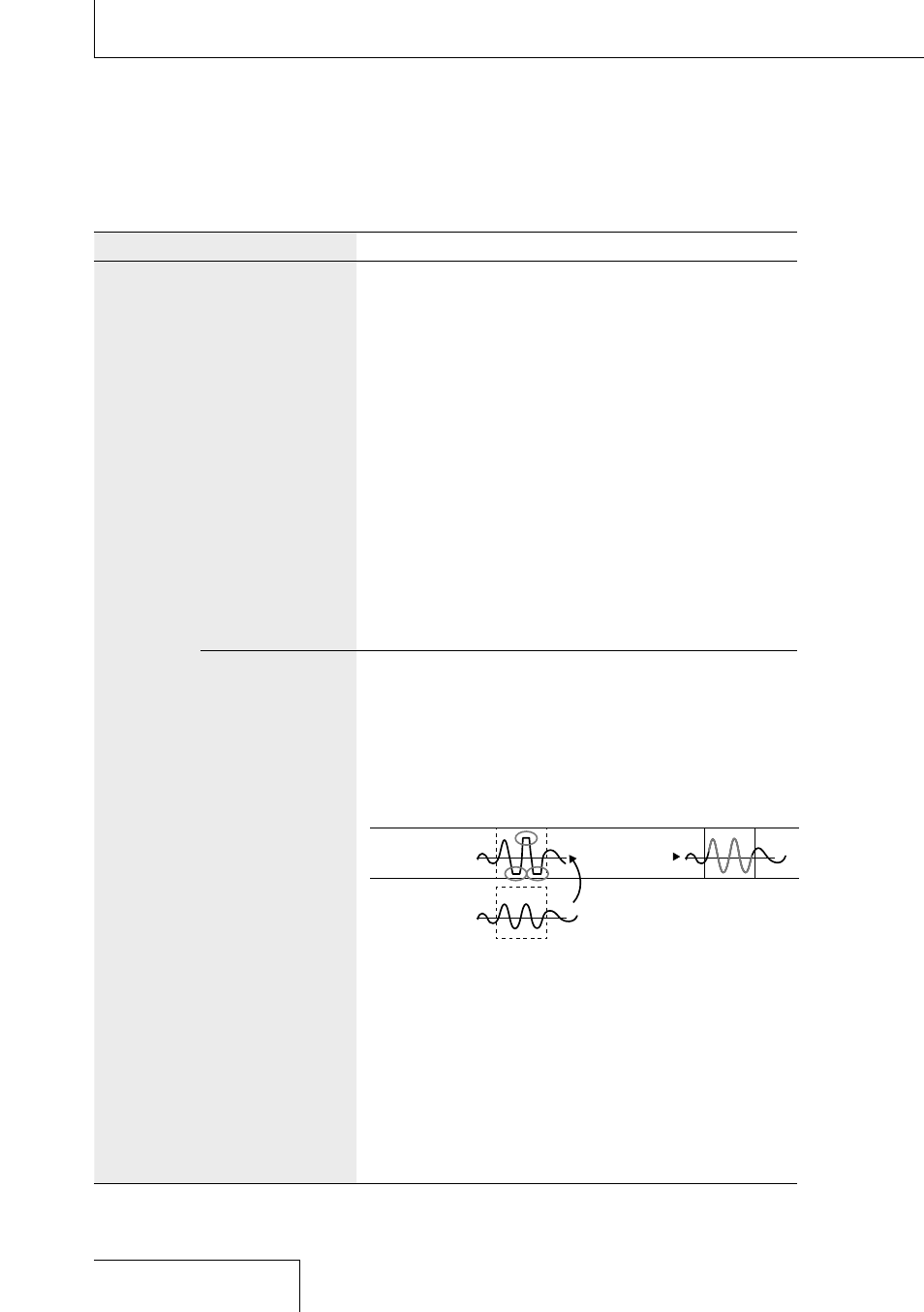66 changing the settings (continued) – Sony MAS-A100 IP-Based Ceiling Beamforming Microphone User Manual
Page 66

66
Changing the settings (continued)
Menu
Item
Settings (*: Default setting)
Recording
Settings
LCF(Low Cut)
When the LCF(Low Cut) function is activated, audio under the
following frequencies is filtered and attenuated. This function
reduces noise caused by the flow of an air-conditioner, outdoor
air, etc.
OFF*: The LCF(Low Cut) function is disabled.
75 Hz: Audio with the frequency of 75 Hz or lower is attenuated.
150 Hz: Audio with the frequency of 150 Hz or lower is
attenuated.
Note
•
When a device is connected to the XLR/TRS jack(s) and either
or both of the left and right XLR/TRS INPUT LEVEL switches are
placed in the “LINE” position, the LCF(Low Cut) function does not
work.
•
The LCF(Low Cut) function does not work when an external
device is connected to the MIC IN/LINE IN jack and the MIC/LINE
INPUT LEVEL switch is placed in the “LINE” position.
Hint
The 75 Hz filter may slightly affect the recorded sound quality. If you
find that the setting is not effective enough, try “150Hz.”
LIMITER
Using two A/D converters for 1 channel, the linear PCM recorder
always reserves audio signals that are 12 dB lower than audio
processed in the normal circuit in addition to the normal audio
signals. If an over-input occurs, recorded data from the point at
which the over-input starts is replaced and compensated. The
limiter prevents sound distortion using a limiter minus time
constant (not available for analog).
Normal circuit
Limiter circuit
(–12 dB)
Switched at once
when
over-input occurs
Optimal level is
set automatically
You can set the time required for recovery from the influences of
the limiter operation:
OFF*: The LIMITER function is disabled.
150 ms: The normal audio signals recover within 150
milliseconds.
1 sec: The normal audio signals recover within 1 second.
1 min: The normal audio signals recover within 1 minute.
• The limiter circuit functions to keep the signal level below the
maximum input level. When a loud sound is input suddenly, the
excess part of the sound is automatically set within the range of the
maximum input level in order to prevent distortion.
